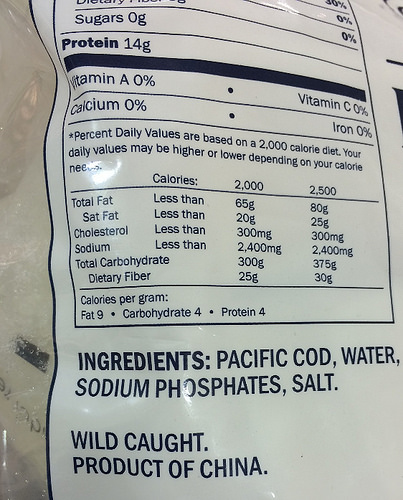Data First Culture
Getting the Information Ecosystem Ready for the AI Revolution
Advanced Leadership Programme, Judge Business School, University of Cambridge
|
|
|

|
|
|
bits/min
|
billions
|
2000
|
6
|
|
billion
calculations/s |
~100
|
a billion
|
a billion
|
|
embodiment
|
20 minutes
|
5 billion years
|
15 trillion years
|
.
Evolved Relationship
Evolved Relationship
Societal Effects
- This phenomenon has already revolutionised biology.
- Large scale data acquisition and distribution.
- Transcriptomics, genomics, epigenomics, ‘rich phenomics’.
- Great promise for personalized health.
Societal Effects
- Automated decision making within the computer based only on the data.
- Subjective biases need to be better understood.
- Particularly important where treatments are being prescribed.
- Interventions could be far more subtle.
Societal Effects
- Shift in dynamic:
- from direct human-data to indirect human-computer-data
- modern data analysis is mediated by the machine
- This change of dynamics gives us the modern and emerging domain of data science
There are three types of lies: lies, damned lies and statistics
??
There are three types of lies: lies, damned lies and statistics
Benjamin Disraeli
There are three types of lies: lies, damned lies and statistics
Benjamin Disraeli 1804-1881
There are three types of lies: lies, damned lies and ‘big data’
Neil Lawrence 1972-?
Mathematical Statistics

‘Mathematical Data Science’

Artificial Intelligence and Data Science
- AI aims to equip computers with human capabilities
- Image understanding
- Computer vision
- Speech recognition
- Natural language understanding
- Machine translation
Supervised Learning for AI
- Dominant approach today:
- Generate large labelled data set from humans.
- Use supervised learning to emulate that data.
- E.g. ImageNet Russakovsky et al. (2015)
- Significant advances due to deep learning
- E.g. Alexa, Amazon Go
Data Science
- Arises from happenstance data.
- Differs from statistics in that the question comes after data collection.
Deep Learning
These are interpretable models: vital for disease modeling etc.
Modern machine learning methods are less interpretable
Example: face recognition
DeepFace
Outline of the DeepFace architecture. A front-end of a single convolution-pooling-convolution filtering on the rectified input, followed by three locally-connected layers and two fully-connected layers. Color illustrates feature maps produced at each layer. The net includes more than 120 million parameters, where more than 95% come from the local and fully connected.

Source: DeepFace (Taigman et al., 2014)
Deep Learning as Pinball

–>
The change from atoms to bits is irrevocable and unstoppable. Why now? Because the change is also exponential — small differences of yesterday can have suddenly shocking consequences tomorrow.
Nicholas Negroponte, Being Digital 1995
Supply Chain

Cromford


Deep Freeze

Deep Freeze

Machine Learning in Supply Chain
- Supply chain: Large Automated Decision Making Network
- Major Challenge:
- We have a mechanistic understanding of supply chain.
- Machine learning is a data driven technology.
Bits and Atoms: Information Meets Goods
- Examples
- (2015/aug/25/africa-benefit-data-science-information)
- SafeBoda
- Kudu Project
–>
Post Digital Transformation
The Tribal Mentality
- \(\text{data} + \text{model}\) is not new.
- Dates back to Newton, Laplace, Gauss
- Plethora of fields: E.g.
- Operations Research
- Control
- Econometrics
- Statistics
- Machine learning
- Data science
The Tribal Mentality
- This can lead to confusion:
- Different academic fields are:
- Born in different eras
- Driven by different motivations
- Arrive at different solutions
- Different academic fields are:
Tribalism Can be Good
- Allows for consensus on best practice.
- Shared set of goals
- Ease of commiunication
- Rapid deployment of robust solutions
Professional Tribes
- This is the nature of professions
- lawyers
- medics
- doctors
- engineers
- accountants
Different Views
\[\text{data} + \text{model}\]
- For OR, control, stats etc.
- More things unite us rather than divide us.
We’re no longer hunter gatherers …
- The automation challenges we face require
- all of our best ideas.
- rethinking what \(\text{data}+\text{model}\) means
- rapid deployment and continuous monitoring
- This is the era of data science
Discomfort and Disconformation
- Talking across field boundaries is critical.
- It helps us disconfirm our beliefs.
- It’s not comfortable, but it’s vital.
Areas of Good Data
- Finance
Criteria for Success
- Executive sponsorship (Office of CEO).
- Technical Expertise (Open minded expert).
- Financial buy in (CFO).
- Assimilated knownledge (CTO).
–>
Data
- Hard to overstate its importance.
- Half the equation of \(\text{data} + \text{model}\).
- Often utterly neglected.
Data Neglect
- Arises for two reasons.
- Data cleaning is perceived as tedious.
- Data cleaning is complex.
Data Cleaning
- Seems difficult to formulate into readily teachable princples.
- Heavily neglected in data science, statistics and ML courses.
- In practice most scientists spend around 80% of time data cleaning.
Data Readiness Levels

https://arxiv.org/pdf/1705.02245.pdf Data Readiness Levels (Lawrence, 2017)
Three Grades of Data Readiness
- Grade C - accessibility
- Transition: data becomes electronically available
- Grade B - validity
- Transition: pose a question to the data.
- Grade A - usability
–>
Normal Organisational Rules Apply
- AI is not magical pixie dust
- Standard organisational instincts apply
- Disruption requires agile thinking.
- Don’t be the Duke of York
- Be Special Forces
Thanks!
- twitter: @lawrennd
- podcast: The Talking Machines
Guardian article on Data Science Africa
Blog post on System Zero
Blog post on Lies, Damned Lies and Big Data
Blog post on Data Readiness Levels
References
Lawrence, N.D., 2017. Data readiness levels. arXiv.
Russakovsky, O., Deng, J., Su, H., Krause, J., Satheesh, S., Ma, S., Huang, Z., Karpathy, A., Khosla, A., Bernstein, M., Berg, A.C., Fei-Fei, L., 2015. ImageNet Large Scale Visual Recognition Challenge. International Journal of Computer Vision (IJCV) 115, 211–252. https://doi.org/10.1007/s11263-015-0816-y
Taigman, Y., Yang, M., Ranzato, M., Wolf, L., 2014. DeepFace: Closing the gap to human-level performance in face verification, in: Proceedings of the IEEE Computer Society Conference on Computer Vision and Pattern Recognition. https://doi.org/10.1109/CVPR.2014.220